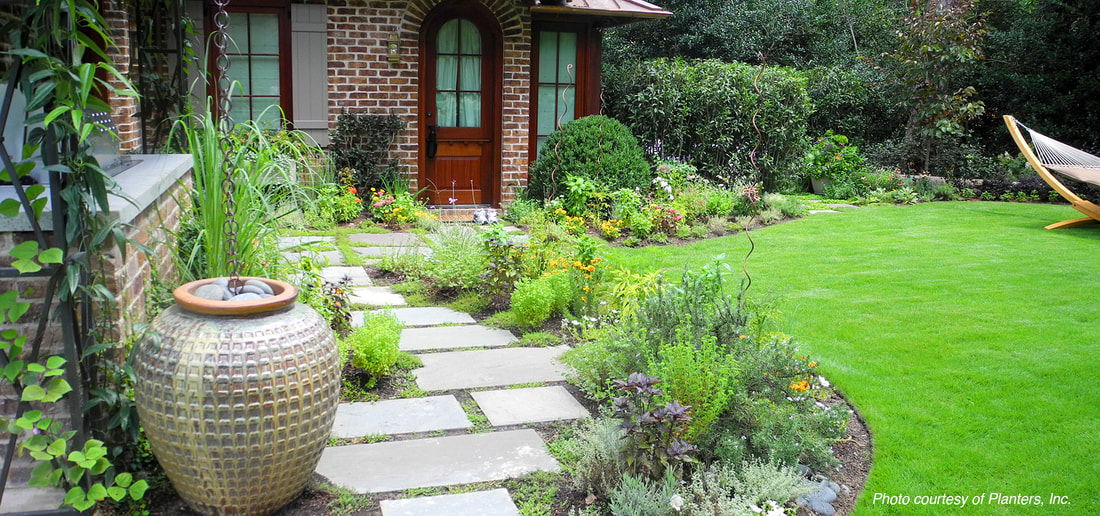Outdoor water conservation
You can have a healthy landscape and conserve water!
 Click to view the UGA Water Wise Landscape Guide
Click to view the UGA Water Wise Landscape Guide
In Georgia, fall and winter planting of trees, shrubs, perennials and other plants is recommended because there is less demand for water and nutrients by the top and more energy and food for root growth. A plant installed during cooler temperatures is less stressed because the plant has time to develop a strong root system, yet requires significantly less water this time of year.
ALL Drought Levels rules allow 30-day watering for all newly installed plant materials - and you CAN conserve water and improve your landscape.
We have worked with the University of Georgia to provide information for media and consumers and developed a series of articles for guidance on smart planting for water conservation! The first two articles can be found below:
New landscape plants can be installed under water restrictions
Plan landscape with a long term goal of saving water
Click here for UGA WaterWise Landscape Guide
ALL Drought Levels rules allow 30-day watering for all newly installed plant materials - and you CAN conserve water and improve your landscape.
We have worked with the University of Georgia to provide information for media and consumers and developed a series of articles for guidance on smart planting for water conservation! The first two articles can be found below:
New landscape plants can be installed under water restrictions
Plan landscape with a long term goal of saving water
Click here for UGA WaterWise Landscape Guide
Fall & Winter Planting Guide
Click here to print this information
Click here to print this information
- Fall and winter planting of woody ornamentals and herbaceous perennials is recommended because there is less demand for water and nutrients by the top and more energy and food for root growth. While the crown of the plant shuts down for winter, the roots continue to grow. A plant installed during cooler temperatures is less stressed because the plant has time to develop a strong root system.
- Prepare the planting bed properly by deep tilling to a depth of 8 to 12 inches. When planting individual plants, dig a wide planting hole to provide a favorable rooting environment. A large planting hole and deep tilling will allow roots to expand more easily and develop a strong root system that will better sustain the plant during times of drought.
- Add appropriate amendments to the planting bed (when necessary) to improve the physical properties of the soil — water retention, water infiltration, drainage — or to enhance its mineral and microbial content. Soil amendments contribute to an overall healthier plant environment, allowing easier root development and fewer soil-related problems.
- Avoid placing granular general-purpose fertilizers in the planting hole, because these products can dehydrate the roots of plants. Add only slow-release fertilizer to the planting hole if fertilizer is needed. General-purpose fertilizer added to the planting hole could cause root injury and greater loss of water in the plant.
- Give special care to seasonal color beds because of their high demand for water and maintenance. Planting seasonal color on well-amended, raised beds will lead to a healthier and more water efficient landscape.
- Apply 3 to 5 inches of mulch on the soil surface after planting to conserve moisture and help maintain a uniform soil temperature while preventing weeds that compete with plants for light, water and nutrients. Fine-textured mulches prevent evaporative water loss better than coarse-textured mulches. For best water efficiency, mulch out to the drip line of plants, but do not pile mulch deeply against the trunk.
- Watch for moisture stress symptoms before deciding when to irrigate. An abnormal gray-green color or obvious wilting are good indicators that a plant needs moisture. Watering only when plants truly require it will help develop a deep, strong root system and acclimate plants to survive during drier periods.
- The best time to irrigate is at night or early in the morning to conserve moisture and avoid evaporative loss of water. Watering between the hours of 9 p.m. to 9 a.m. is more efficient to the plant and does not lead to any increase in problems such as disease.
- Deep watering encourages strong, healthy root systems that are water efficient. Avoid light, frequent irrigation that encourages shallow rooting. Infrequent but thorough watering is the best formula for a healthy landscape. Water long enough to penetrate the soil to a depth of 6 to 8 inches.
- A soil test provides the best gauge for fertilization requirements in the landscape. A healthy landscape is more water efficient. Proper nutrition enables plants to better use available water and to conserve it during dry periods. Over-fertilization increases plant stress during times of drought.
- Slow-release fertilizers provide a more even uptake of nutrients by the plant, resulting in a more uniform growth rate, which is more water efficient. Excess nitrogen or high nitrate fertilizers cause rapid growth and an increased demand for water.
- Avoid over-fertilization. Over-fertilization can cause excessive plant growth and additional water requirements.
- Avoid fertilizing during periods of limited rainfall or high temperatures. Additional fertilizer can cause root burn and other damage on drought stressed plants.
- During times of severe drought, cut back annual and perennial flowers several inches to reduce moisture loss. Reduction in the plant’s overall canopy will cut down on water loss through transpiration.
